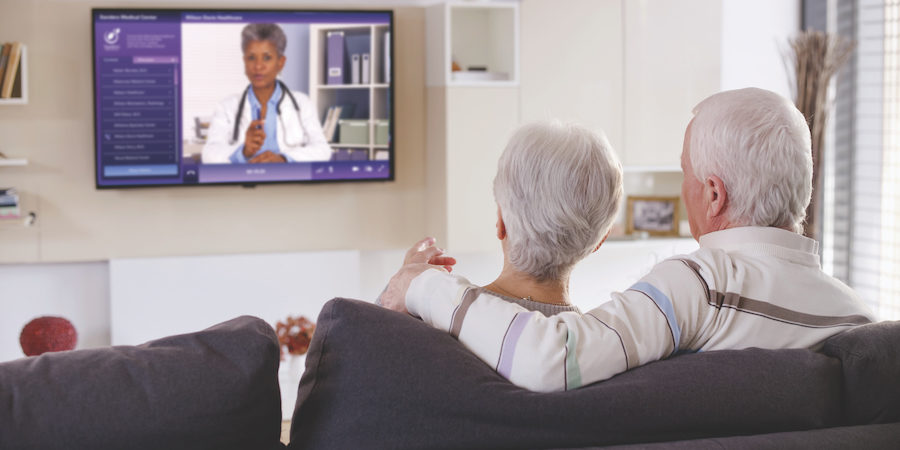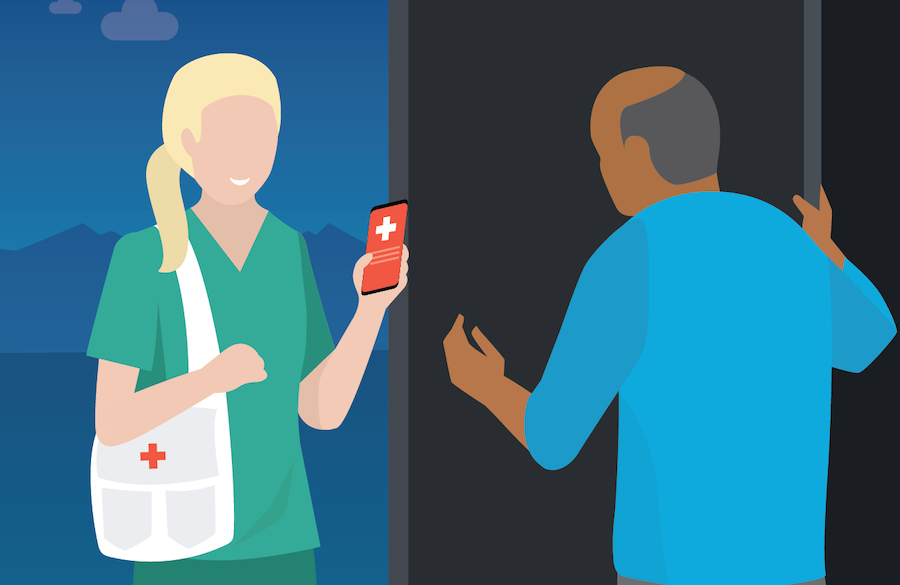Remote patient monitoring (RPM) has been gaining momentum for years, as hospitals and care providers look for ways to manage a rapidly aging population with complex chronic health needs. But until recently, RPM faced a major impediment. The Centers for Medicare & Medicaid Services (CMS) — the single largest payer for seniors and chronically ill patients — didn’t make it easy for providers to manage remote monitoring or get paid for it.
That began to change last year, when CMS implemented three new RPM reimbursement codes and announced another that took effect in January 2020. A few months later, COVID-19 came along and changed all CMS’s telehealth rules, further broadening access to remote monitoring.
Why did CMS embrace RPM, even before the pandemic? What are the new rules, and what do they mean for health systems and care providers?
The evolution of RPM reimbursement
In most states, remote patient monitoring reimbursement had long been a gray area for care providers. Twenty states offered some sort of reimbursement, but for everyone else, CMS lumped remote monitoring into a broader telehealth category that only applied to individuals in rural or remote areas.
Then in 2017, CMS published a two-year study on its Chronic Care Management (CCM) program, which demonstrated how the program saved Medicare millions of dollars, decreased hospital readmissions and increased patient awareness around disease management — three key goals of value-based care.
Recognizing the value that remote monitoring could add to the CCM program, CMS decided to make the service more accessible.
In 2018, CMS designated a separate billing code for remote monitoring and offered a formal definition. CPT code 99091 covers the “collection and interpretation of physiologic data (e.g., ECG, blood pressure, glucose monitoring) digitally stored and/or transmitted by the patient and/or caregiver to the physician or other qualified healthcare professional, qualified by education, training, licensure/regulation (when applicable) requiring a minimum of 30 minutes of time.”
This allowed physicians to bill for remote monitoring services, but only if they personally spent at least 30 minutes per month interacting with the patient. If clinical staff provided this service, it wasn’t reimbursable, and the code didn’t pay for equipment setup or patient training.
CMS addressed these challenges with three new codes on the 2019 Medicare Physician Fee Schedule (PFS):
-
99453: “Remote monitoring of physiologic parameter(s) (e.g., weight, blood pressure, pulse oximetry, respiratory flow rate), initial set-up; and patient education on use of equipment.” (Average Medicare reimbursement rate: $21.)
-
99454: “Remote monitoring … device(s) supply with daily recording(s) or programmed alert(s) transmission, each 30 days.” (Average Medicare reimbursement rate: $69.)
-
99457: “Remote physiologic monitoring treatment management services, 20 minutes or more of clinical staff/physician/other qualified healthcare professional time in a calendar month requiring interactive communication with the patient/caregiver during the month.” (Average reimbursement rate: $54.)
Under these codes, Medicare pays for the device, the initial setup, patient training and the ongoing monitoring of patient data. The minimum time requirement per patient has been reduced from 30 minutes to 20, and physicians no longer have to manage these patients alone. Clinical staff, including RNs and nursing assistants, can work with patients on the physician’s behalf.
Based on these reimbursement rates, providers can earn nearly $1,500 per year for monitoring one patient. The 2019 PFS also clarified that CCM and remote monitoring are separate services, so care providers can bill for both for services for the same patient — meaning remote monitoring adds new revenue for CCM patients, without adding new patients for the physician.
New codes and clarifications for January 2020
In 2020, CMS again expanded the reimbursement possibilities for physicians by adding CPT code 99458, which pays for an additional 20 minutes per patient per month.
Your definitive guide to EVV compliance
Discover how mobile solutions can can help your agency satisfy your state's EVV requirements. Download Now
The 2020 PFS also makes it easier for clinical staff to help manage patients using RPM. Under the 2019 codes, remote monitoring services had to be billed “incident to,” which meant clinical staff had to be in the same location as the physician to provide these services. Under the new codes, remote monitoring can be provided “under general supervision” of a physician.
That’s all good news for most healthcare providers, but there was a catch for some hospitals. CMS announced that federally qualified health centers (FQHCs) and rural health centers (RHCs) could not bill under the remote monitoring CPT codes. (That has changed, if only temporarily, due to COVID-19.)
CMS also clarified that to qualify for reimbursement, providers would need to ensure that:
-
Medicare Part B patients are charged a 20 percent copay (routinely waiving copays can trigger fines under the federal Civil Monetary Penalties Law and the Anti-Kickback Statute)
-
Patients have a preexisting relationship with the provider
-
Patients opt in for remote monitoring services
-
The service is ordered by a physician or other “qualified healthcare professional” (such as a nurse practitioner, certified nurse specialist or physician assistant)
-
Data can be wirelessly synced for evaluation
-
Patients are monitored for at least 16 days to be applied to a billing period
Some of these rules have changed — if only temporarily — due to COVID-19.
New Interim Rules for the COVID-19 era
In response to the COVID-19 crisis, CMS released an Interim Final Rule in March 2020 and Second Interim Final Rule in May 2020 — both of which ease telehealth restrictions and broaden access. The Interim Rules introduced 80 new CPT codes for telehealth and opened these services to all Medicare patients, regardless of their location.
RPM was already more accessible than most telehealth services, but the Interim Rules relaxed some restrictions nonetheless. Among the most notable changes:
-
RHCs and FQHCs now receive standalone reimbursement for telehealth services
-
Providers can provide remote monitoring for new patients without a preexisting relationship
-
COVID-19 patients can receive remote monitoring services for fewer than the standard 16 days, but two days is the minimum
In the Interim Rules, CMS also clarified which Medicare patients qualify for remote monitoring under the standard (non-emergency) rules: Remote monitoring can also be used to manage acute conditions (including, but not limited to, COVID-19) and post-surgical care.
This clarification is permanent, though many of the Interim Rules could be reversed when COVID-19 eventually subsides. But having realized the benefits of telehealth during the pandemic, many healthcare providers and Medicare patients are hoping the trend continues after the national health emergency is over.
Before launching a remote monitoring program for your organization, answer these questions. And learn about how Vivify’s virtual care and telehealth solution helps hospitals care for patients with COVID-19.










